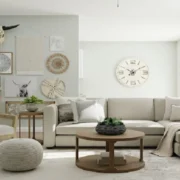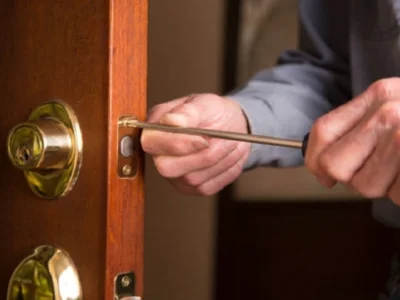Understanding Personalized Home Design
When talking about building and interior design, creating personalized homes is about crafting spaces that truly reflect the needs and desires of individuals or families. The owner’s personality comes through in tailored designs, which also make life better by making spaces more useful and comfortable.
The idea is to combine style with function, giving each individual a unique space that fits their way of life. There should be no two homes that look the same; each family has a unique story and activities that make up their surroundings.
Functional personalization makes people feel like they really fit and own what they’re doing. It’s more than just a place to live when personal touches are added to the design of a home. It becomes a sanctuary that fits with your daily habits and style tastes.
This harmony turns a building into a beloved place to stay. Making a space fit your tastes can make you feel good on an emotional level, which can improve your mental and emotional health and make everyday life more enjoyable.
The Impact of Tailored Design on Home Comfort
Improving a home’s comfort is frequently a primary objective in personalized home designs. Given the homeowner’s lifestyle and tastes, designers can make spaces that are much more comfortable.
Individuals who enjoy hosting events, for example, might choose open-plan areas that allow guests and hosts to connect easily, making social events more welcoming and lively.
Others, who value privacy, may choose more private and isolated areas designed just for relaxing and thinking, complete with cozy nooks or soundproofing for the utmost peace and quiet.
Well-planned spaces have a big effect on mental health and work, according to research. Multiple studies have shown that making living spaces fit people’s habits and tastes makes daily tasks more enjoyable and less stressful. Customized spaces can make daily life easier, more efficient, and better for everyone’s health.
Functionality: More Than Just Aesthetics
Its individual home design works best when it combines good looks with useful features. A home’s looks are very important, but it also needs to meet basic needs in order to be lived in.
This balance creates a smooth space where everything, from where the furniture is placed to how the rooms are set up, is done on purpose and makes daily tasks easier. Functionality is more than just making sure that places look nice; it also means planning ahead to make sure that every part of the house is used well.
For instance, kitchens that are built with ergonomics in mind can make it easier to prepare meals, which can make cooking and eating more enjoyable overall. Making living rooms open so they can be used for different things, like work or relaxing, makes sure that every part of the house is utilized.
Functional design has benefits beyond how it looks. It can also make your home more enjoyable to live in and meet the changing needs of modern families.
Incorporating Sustainable Practices
Using eco-friendly methods in home design is becoming more important as environmental worries rise. As well as being better for the people who live in them, homes that are made with sustainable materials and energy-saving methods are better for the environment.
Solar panels or geothermal heating are examples of sustainable energy sources that can help with sustainability. These sources can cut down on energy costs and have less of an effect on the environment.
People can be more comfortable and care less about the environment by using passive solar design, which lets the sun’s energy automatically heat and cool spaces.
To make life better, you can help the environment by collecting rainwater and using recycled materials. When you build in a green way, you can often save money on utilities and make your home healthier, which are both big pluses for people who want to save money and live in an eco-friendly way.
The Role of Technology in Customization
Modern technology has changed how we create our homes, making it easier to get creative and unique designs. With smart home systems and advanced 3D rendering tools, technology gives people accurate and creative ways to make their design ideas come to life.
Before implementing a design option, designers can simulate it. This lets people see what might happen, make an informed decision, and be sure that the final result meets their needs and expectations. Smart home tech is also now commonplace in personal areas.
Automated systems for lighting, climate control, and security make things more comfortable and easy by giving users customized solutions that change based on their needs and tastes.
Putting technology into living areas can make the whole experience much better by making environments that are intuitive and interactive and that learn from residents and change to make them more comfortable.
Balancing Budget with Personal Preferences
The process of designing a custom home always involves matching what you want with what you can afford. Although imagination has no limits, money may not, and it is important to know how to budget wisely.
Before making any decisions, you should think about which factors will have the biggest effect on your life and your budget. So, this usually means figuring out which key areas need to be customized and coming up with creative ways to make those ideas happen without spending too much money.
In this process, compromises are normal. For a harmonious balance that provides both aesthetic and practical value, careful planning and a clear understanding of “needs” versus “wants” are necessary.
By focusing on the important things and making smart choices, customized designs can be both dreamy and affordable, which results in a satisfying result.
Real Life Examples of Transformative Home Designs
There are many stories about innovative home designs that show how customization can take an ordinary place and make it extraordinary. For example, a simple neighborhood home was turned into a living room with a glazed open-plan area that is light and airy. This design improvement let in more natural light and made the space feel bright and warm, great for family gatherings and social events.
These examples show how carefully planned actions can greatly enhance the quality of life. They show how powerfully tailored design choices can be. Designers often take creative ideas and turn them into well-thought-out places that can adapt to changing needs. This shows that functionality and style can work together to make homes into personal havens.
Considerations for Future Expansion
Finally, future-proofing plans are an important part of custom home planning. Life is always changing, and a flexible design can adapt to growing families or changes in living without having to make major repairs. Keeping a home up-to-date and useful means designing modular areas that can be easily added on to or changed.
If you plan for future growth, like adding new family members, working from home, or making changes to your lifestyle, it can save you time and money in the long run. This kind of planning ahead can make a house more valuable and useful over time, so it’s a good investment for now and the future.
Choice Home Warranty George Foreman in 2024










Comments